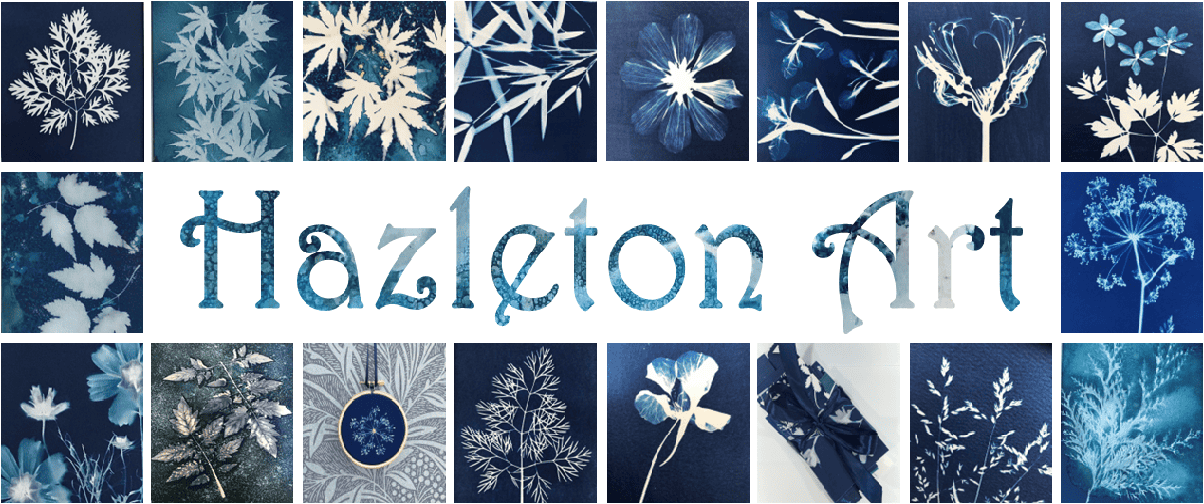Whilst loving the Prussian Blue of Traditional Cyanotype and the many shades of blues, greys and greens of Wet Cyanotype, I thought I would try ‘Toning’ some finished prints to see what other colours and effects I could achieve, using natural products such as tea. Simple to do according to the articles and bloggers in the know!
After re-wetting the chosen prints in plain cold water to make them more absorbent, I slid them into a shallow tray containing a brew of strong breakfast tea, (minus the tea bags). I understand I should have let the tea cool first, but I am not very patient, so it was still fairly hot when they went in. After all who likes cold tea?
I did not bleach the prints first to minimise the blue, (that seems a popular first step) so I wasn’t expecting to see much change in the colours. After moving them around and flipping them over in the tea a few times and waiting and watching, I was starting to get disillusioned, but after about 20 minutes the Prussian blue started changing to a navy blue/black and the white botanical image into a milky coffee colour,- wow what a lovely surprise.
After lifting the prints out and rinsing them in cold water I left them to dry naturally. They developed a little darker but remained deep and even, with a warm Autumnal look, which I love. The chemistry behind this is that the tannic acid in the tea reacts with the iron in the cyanotype solution, resulting in the blue turning first navy blue and then blacky/brown. The reverse of the paper also took on a tea-stained colour, like an old map, which I liked too. I will be toning more prints soon, and experimenting with Tannin-rich coffee, red wine or a mixture of tea and coffee!






Love this x